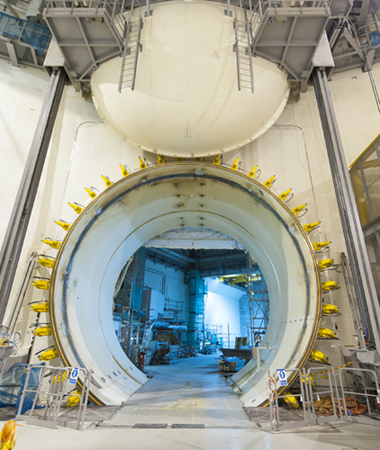Operability of OL3 equipment hatch has been tested
The commissioning tests of the equipment hatch located between the fuel building and the reactor building have been completed. The hatch plays an important role in the leak-tightness of the containment.
The equipment hatch between the reactor building and the fuel building is eight metres in diameter. The hatch is part of the containment and thus makes an important contribution to the leak-tightness of the containment and to nuclear safety. The hatch was used during the construction works to transfer the large components of the reactor coolant system, such as the reactor pressure vessel and the steam generators, into the reactor building.
The equipment hatch is kept closed when the plant unit is in power operation. The hatch is opened during annual outages to enable the transportation of large as well as smaller components in and out of the reactor building. 
Commissioning tests in several steps
All in all, the commissioning tests of the equipment hatch consist of several test steps and all the functional and structural tests have now been completed. Combined system tests with other systems will later be still carried out for the equipment hatch.
The commissioning test steps include multiple tests. The purpose is to verify the integrity and functionality of the entity built up from the components and that this entity functions well, safely and reliably. This means that installation has been completed successfully, power and I&C signals travel as planned and all the protections function correctly. The tests are carried out in collaboration between the component manufacturer, the plant supplier, TVO and the Radiation and Nuclear Safety Authority.
A variety of tests
The commissioning programme of the equipment hatch also includes load and leak-tightness tests. In the leak-tightness test, the gap between the ring seals, which ensure the leak-tightness of the hatch, is pressurised with nitrogen. The change in pressure and temperature between the seals is monitored in the test and the results are used to calculate the leak rate of the equipment hatch. The purpose of load tests was to test the safety limits for minimum and maximum loads and to measure any deformation of the guide rails.
The commissioning of the equipment hatch is carried out completely within commissioning phase A, which covers component and system level testing. The commissioning process of the plant unit proceeds after phase A to phase B, which includes the combined system tests.
Share